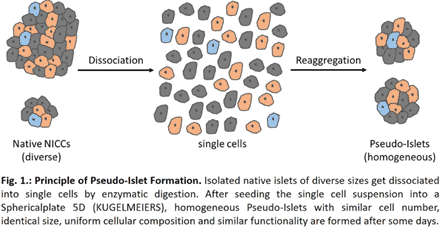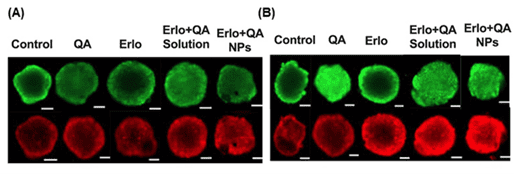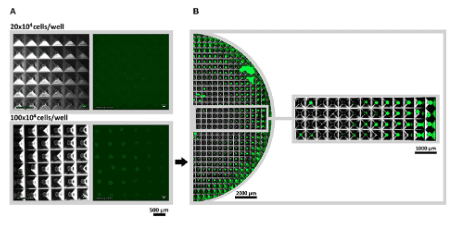SP5D Plate Publication References
Formation of Re-Aggregated Neonatal Porcine Islet Clusters Improves In Vitro Function and Transplantation outcome https://www.frontierspartnerships.org/articles/10.3389/ti.2022.10697/full
Innovative multidimensional models in a high-throughput format for different cell types of endocrine origin https://www.nature.com/articles/s41419-022-05096-x
Coplanar embedding of multiple 3D cell models in hydrogel towards high-throughput micro-histology https://doi.org/10.1038%2Fs41598-022-13987-4
Neonatal porcine Pseudo-Islets – A Standardized and Scalable Source for Islet Encapsulation? https://journals.lww.com/transplantjournal/Fulltext/2021/12001/402_8__Neonatal_porcine_Pseudo_Islets___A.48.aspx

Bio-Engineering of Pre-Vascularized Islet Organoids for the Treatment of Type 1 Diabetes https://doi.org/10.3389/ti.2021.10214
Haploid mouse germ cell precursors from embryonic stem cells reveal Xist activation from a single X chromosome https://doi.org/10.1016/j.stemcr.2021.11.006
Quality control in scRNA‑Seq can discriminate pacemaker cells: the mtRNA bias https://doi.org/10.1007/s00018-021-03916-5
Nano-synergistic combination of Erlotinib and Quinacrine for non-small cell lung cancer (NSCLC) therapeutics – Evaluation in biologically relevant in-vitro models https://doi.org/10.1016/j.msec.2021.111891

Fig. 5. (A) & (B) Representation of Live/Dead cells in the spheroid mass. Live cells are stained green and dead cells are stained red using a live/dead cell assay kit.
Tetraspanin 5 (TSPAN5), a Novel Gatekeeper of the Tumor Suppressor DLC1 and Myocardin-Related Transcription Factors (MRTFs), Controls HCC Growth and Senescence https://doi.org/10.3390/cancers13215373
Ectopic Bone Tissue Engineering in Mice Using Human Gingiva or Bone Marrow-Derived Stromal/Progenitor Cells in Scaffold-Hydrogel Constructs https://doi.org/10.3389/fbioe.2021.783468
Hypoxia Onset in Mesenchymal Stem Cell Spheroids: Monitoring With Hypoxia Reporter Cells
https://doi.org/10.3389/fbioe.2021.611837

FIGURE 5. Large scale spheroid formation in microstructured wells. (A) Spheroids were monitored via Lumascope for 20 × 104 and 100 × 104 cells per well after 24 h of formation time. Larger spheroids (100 × 104 cells/multiwell) would express the hypoxia reporter protein UnaG, while low numbers (20 × 104 cells/multiwell) did not show a signal.
Minispheroids as a Tool for Ligament Tissue Engineering: Do the Self-Assembly Techniques and Spheroid Dimensions Influence the Cruciate Ligamentocyte Phenotype?https://doi.org/10.3390/ijms222011011